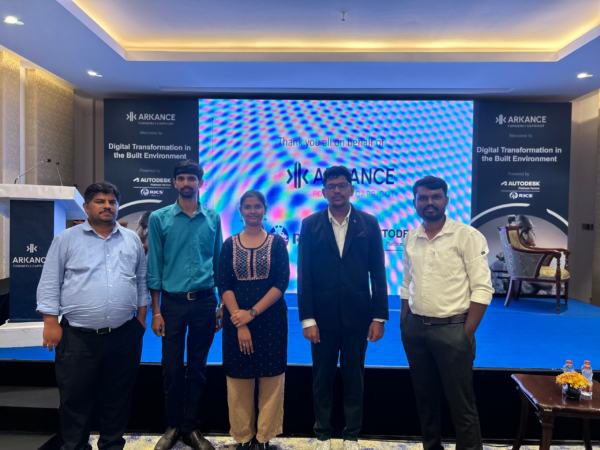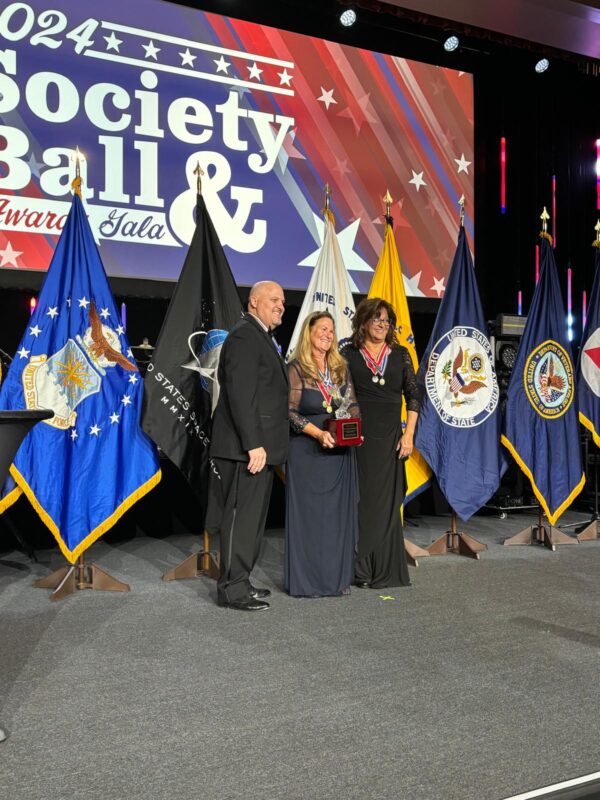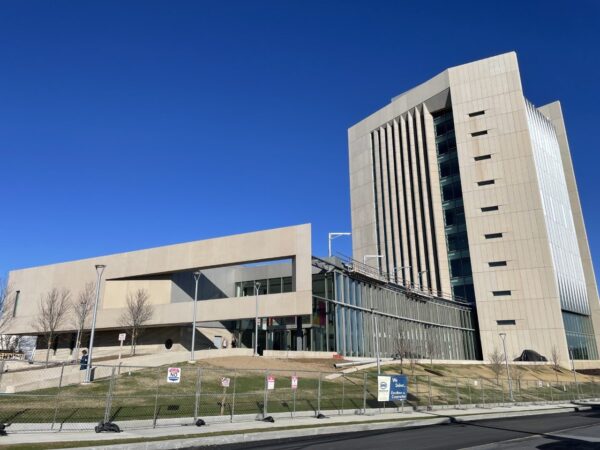
July 15, 2024 | Articles
Construction’s Digital Transformation & The Tools of Modern Project Management

Not every project management professional gets the opportunity to support a project within a United Nations Educational, Scientific, and Cultural Organization (UNESCO) World Heritage Site. But each day, the Basilica di Santa Maria del Fiore at the heart Florence, Italy, rewards Hill Project Manager Andrea Lattanzi and Construction Engineer Niccolo Bani with stunning views from one of these spectacular Sites. Nicknamed the Duomo—literally the Cathedral—the famous Roman Catholic basilica stands less than 100 meters away from the Bufalini Refurbishment, the project Andrea and Niccolo support for Hill.
The dome of the Duomo (the English word ‘dome’ being etymologically related to ‘Duomo’ because of the round cupolas characteristic of such cathedrals as the Duomo) is an impressive feat of engineering. Filippo Brunelleschi ingeniously devised a way to construct and hoist into place a massive dome that could support its own weight without concrete or the flying buttresses typical of contemporary architecture, ushering in the architectural aspect of the Renaissance. With its construction completed in 1436, the Duomo immediately stood out as a masterpiece. Now, the structure serves as an architectural emblem of the Renaissance itself, with its engineering marvel of a dome and location in Florence. And what better than one of the world’s most famous engineering innovations and the birthplace of the Renaissance, to inspire a day’s work managing your own construction project?
Against this historic engineering feat, the 23,000 SM Bufalini project involves the refurbishment of six buildings at the corner of two of Florence’s most important streets, Via dei Servi and Via Bufalini. The high-end residential complex, known as 14•21 Firenze, will incorporate the existing architecture of buildings built over seven centuries while achieving the luxuries and comforts of modern living. The project consists of several phases. The first, consisting of 30 apartments, is under construction and scheduled for completion in June 2021.
Hill is providing owner’s representative, project management, and construction management services for the redevelopment. Andrea adds: “Niccolo and I will be supporting the project through its entire lifecycle. In the current [first] phase, we are in charge of construction management. So our main duties involve monitoring the construction schedule, managing the budget, and verifying the quality of the work carried out by the contractor. Another fundamental part of this phase is reporting to the client and making sure they are well aware of any possible situation that could lead to cost and/or schedule issues.
“For the ongoing design phases, our main responsibilities involve coordinating with the designers in obtaining building permits, helping ensure the plans are fully developed and on time, and preparing the contractor tender documents. We also have to control the design documents to try and limit elements that could lead to risky situations during construction.”
Another challenge involves the careful management of the mechanical, electrical, and plumbing (MEP) work, as the architectural condition of the historic buildings limits the client’s MEP options. Andrea explains: “When you can’t change some of the features, there will be repercussions throughout the design. You will have to identify any impacts and address them as early as possible during design to avoid serious problems down the line. For example, the project involves installing brand new plumbing throughout the complex. We perform a deep design analysis to discover the optimal routes for piping to preserve the architecture and create luxury apartments with layouts end users are happy with. This has been the main lesson learned so far for Niccolo and myself: when working on historical buildings, all designs require a careful verification process. Sometimes double checking is not enough, better to triple check.”
A key aspect of the project involves improving the energy performance of the facility. In addition to making 14•21 more sustainable, this adds value to the apartments being built. Raising the efficiency of historic buildings can be very complicated, but Niccolo and Andrea worked with the design team to achieve the best energy performance possible given the buildings’ architectural features and the constraints of building in a UNESCO area.
Despite the design and logistical challenges, Niccolo and Andrea are confident the team is well prepared to deliver a successful project. The whole team collaborates well, according to Andrea. In fact, Hill’s support extends beyond just the design and construction phases into the business strategy of the client. Specifically, Niccolo and Andrea are using their familiarity with the project to help the client develop their marketing and sales strategies. This unique use of owner’s representatives has led to a robust website for marketing the new project.
“Obviously it is an honor and a pleasure to work in such a unique area of Florence, despite any challenges it entails,” concludes Andrea. “It is also a pleasure to work on such a great team delivering such an important project for the city. I think we’re creating something in 14•21 that doesn’t just stand in the shadow of the Duomo’s dome, but compliments the Duomo’s presence in Florence and allows inhabitants to draw daily inspiration from our world heritage.”
“We are honored to work on such a high-profile redevelopment project and remain absolutely committed to continued growth throughout Italy in the years to come,” adds Director of Operations for Italy Martina Martino.
For more information about the project, please visit: https://1421firenze.com/.
For more information on careers with Hill International, Inc., please visit https://www.hillintl.com/en/experienced-professionals.
Share

July 15, 2024 | Articles
Construction’s Digital Transformation & The Tools of Modern Project Management

July 10, 2024 | Articles
GC/CM at Post Falls: Managing Avista’s North Channel Dam Rehabilitation Project

June 23, 2024 | Articles
Irv Richter – An Innovator, A Pioneer, A Leader (1944 – 2024)

June 14, 2024 | Articles
Environment of Care Standards – Meeting the Challenge (Part Two)

June 13, 2024 | Articles
PMO for Public Transit Project Success: The Reopening of Philadelphia’s Franklin Square Station

June 7, 2024 | Articles

May 17, 2024 | Articles
Hill Interim Federal Market Sector Leader Jane Penny Receives Golden Eagle Award

April 11, 2024 | Articles
A Model Move: Managing Move-In at the Sylvia H. Rambo U.S. Courthouse